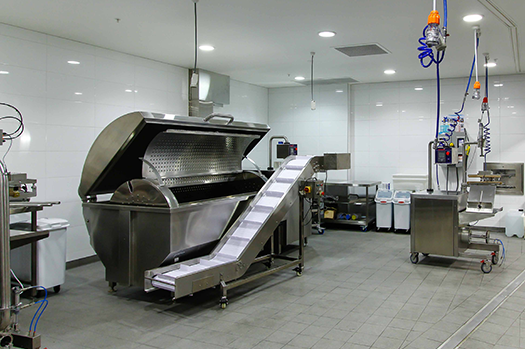In recent years, the open kitchen concept has gained popularity in the food service industry. By removing the traditional barriers between chefs and diners, this design trend creates a captivating dining experience that combines transparency, culinary theatre, and a sense of connection. However, this design language is not without potential pitfalls.
Together, we’ll explore both the advantages and disadvantages of utilising an open kitchen concept, with the aim of assisting restaurant owners in designing a showstopping open kitchen that enhances the overall customer experience.
Advantages:
1. Fostering Transparency:
One of the primary advantages of an open kitchen is the transparency it offers. Guests can witness the culinary magic unfold before their eyes, from food preparation to plating. This experience builds trust and gives customers confidence in the quality and freshness of the dishes being served.
2. Engaging Culinary Theatre:
An open kitchen provides an opportunity for chefs to showcase their culinary skills and creativity. Incorporate elements of culinary theatre, such as live cooking stations, flaming dishes, or interactive presentations, to captivate guests’ attention and create a memorable dining experience. The sights, sounds, and enticing aromas will engage all the senses and leave a lasting impression.
3. Customising the Ambiance:
The design of your open kitchen should align with your overall restaurant ambience. Whether sleek and modern or rustic and cosy, ensure that the open kitchen seamlessly integrates with the overall design. Consider using materials, colours, and lighting that complement the theme and create a visually cohesive space.
4. Efficient Workflow and Organisation:
While the focus is on creating a visually appealing kitchen, it’s crucial to maintain an efficient workflow and organisation. Plan the layout carefully to optimise space, facilitate smooth communication between kitchen staff, and ensure a seamless flow from food preparation to service. Keep in mind the safety and comfort of the chefs while maintaining an open and accessible setup.
5. Interactive Experiences for Guests:
An open kitchen concept allows for interactive experiences that involve guests directly in the culinary process. Consider incorporating chef’s tables or counter seating, where diners can sit closer to the action and engage in conversations with the chefs. This not only adds a sense of exclusivity but also creates an opportunity for personalised interactions and culinary storytelling.
Disadvantages:
1. Noise and Distractions:
An open kitchen can be noisy and bustling, which may create a distracting environment for both the kitchen staff and the diners. The sounds of sizzling pans, chopping, and conversations among the chefs can be disruptive, making it challenging for customers to have quiet conversations or for kitchen staff to concentrate on their tasks.
2. Limited Privacy:
The transparency of an open kitchen means that customers can see everything happening in the kitchen, including any potential mishaps or mistakes. While this can build trust when everything runs smoothly, it also leaves little room for privacy and may expose any shortcomings or errors to the customers, potentially affecting their perception of the restaurant.
3. Temperature and Odour Control:
An open kitchen generates a significant amount of heat and cooking odours. While this can be enticing to some customers, it may be uncomfortable for others, especially if they are seated near the kitchen area. Maintaining proper ventilation and temperature control becomes crucial to ensure the comfort of both customers and kitchen staff.
4. Limited Hideaway for Less Presentable Tasks:
In a traditional kitchen layout, areas such as dishwashing or food prep that may not be visually appealing or glamorous are usually tucked away from customer view. However, in an open kitchen concept, these areas are exposed, and any mess or clutter associated with these tasks can be visible to diners, potentially affecting their perception of cleanliness and hygiene.
5. Increased Pressure on Kitchen Staff:
The presence of customers and their ability to observe the kitchen operations can create added pressure on the kitchen staff. They may feel the need to perform flawlessly and be constantly aware of their actions, potentially increasing stress levels. This pressure can impact their focus and ability to work efficiently, which may affect the overall quality of the food and service.
6. Limited Control Over Customer Experience:
With an open kitchen, the control over the customer experience extends beyond the dining area. The behaviour and interactions of the kitchen staff, while performing their tasks, become part of the overall experience. Any negative interactions or visible tension in the kitchen can directly impact the perception and satisfaction of the diners.
Designing a showstopping open kitchen concept goes beyond aesthetics—it’s about creating an immersive and engaging dining experience. By embracing transparency, incorporating culinary theatre, customising the ambiance, ensuring efficiency, and providing interactive opportunities, you can elevate your customers’ experience and differentiate your restaurant from the competition.
At Regethermic, we’ve been working with restaurant owners and staff to create great kitchens for fifty years. We can help you design and install a kitchen that allows you to take advantage of all the benefits that come with open design, and utilise our expertise to minimise the drawbacks. Contact us today to see how we can help you.

